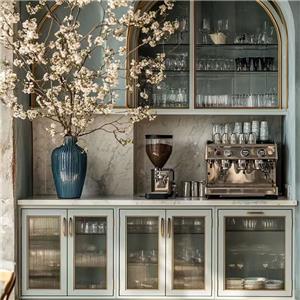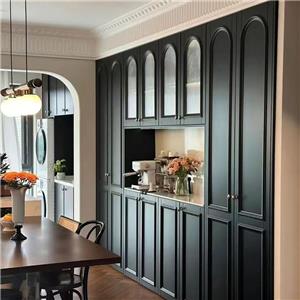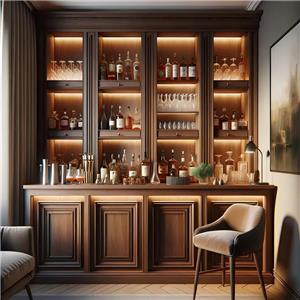Which wardrobe wastes the most space or saves space?
Wardrobe is one of the essential furniture for every family. Its function is not only to store clothes, but also to undertake the dual tasks of home organization and beauty. In home decoration, the choice of wardrobe is closely related to space utilization. If the choice is not appropriate, the wardrobe may become a "burden" of space, occupy too much space and affect the overall layout. On the contrary, reasonable design and selection of wardrobe can save space to the maximum extent and make life more comfortable and efficient.
So, which wardrobe will waste space? Which designs can save space to the greatest extent? In this article, we will compare different types of wardrobes and analyze them in detail from the aspects of appearance, function, design and use efficiency to help readers make the most suitable choice for their home.
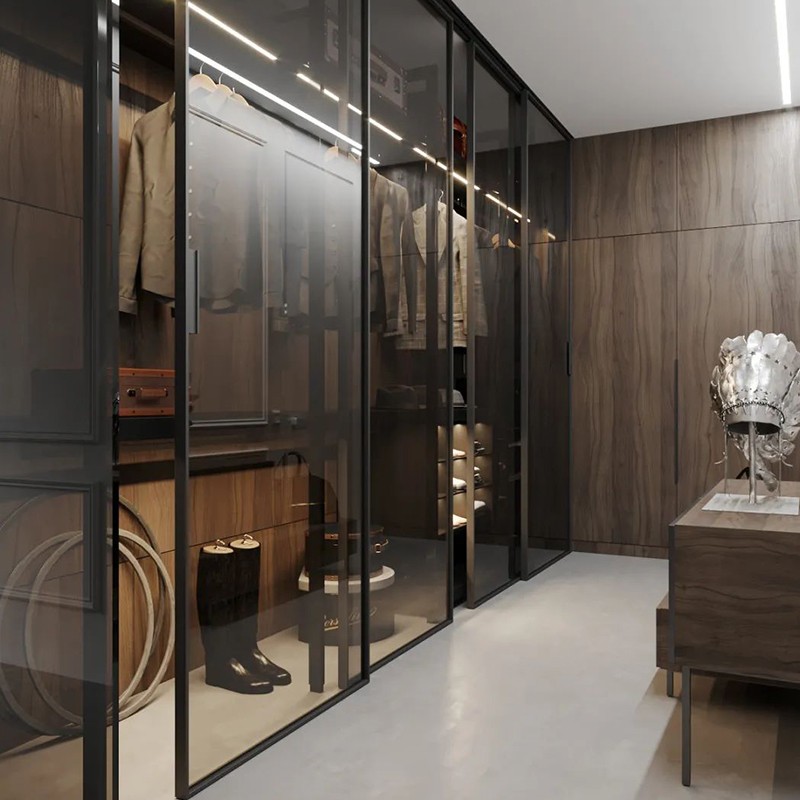
How does wardrobe design affect space utilization?
When choosing a wardrobe, design is a crucial link. Different designs not only affect the capacity of the wardrobe, but also directly determine the utilization rate of space. Reasonable design can avoid wasting space, while inappropriate design may cause the wardrobe to occupy unnecessary areas and even cause waste of space.
1.1 Functional design and space utilization
The functional design of the wardrobe has a huge impact on the utilization rate of space. A standard wardrobe design usually includes a hanging area, a drawer area, a shoe rack, and a storage layer. Different families have different needs for clothing, and the wardrobe design should also be planned according to the actual situation of the individual or family. For example:
● Single-function wardrobe: Some wardrobes may be designed relatively simply, providing only a large hanging area or a few simple drawers. This type of design is relatively basic, but there is also a risk of uneven space utilization, because they can only store a certain type of items, such as long skirts, coats, etc., and the storage space for other small items may be relatively tight.
● Multifunctional wardrobe: A wardrobe with a multifunctional design, including drawers, hanging rods, shoe racks, hat racks, etc., can better organize clothes and reduce the random stacking of clothes. This type of wardrobe can usually use space more efficiently and is suitable for families with a variety of clothing types.
1.2 Wardrobe size and space planning
The size of the wardrobe is also a key factor affecting space use. If the wardrobe is too large, it may occupy too much available space in the room, resulting in the compression of other functional areas, and ultimately making the room cramped and uncomfortable. On the contrary, if the wardrobe is too small, it may not be able to store enough clothes, which will also cause space waste.
When choosing a wardrobe, it is important to understand the actual size of your space and the storage needs of the wardrobe. A wardrobe with a reasonable design that meets actual needs can not only improve space utilization efficiency, but also avoid waste.
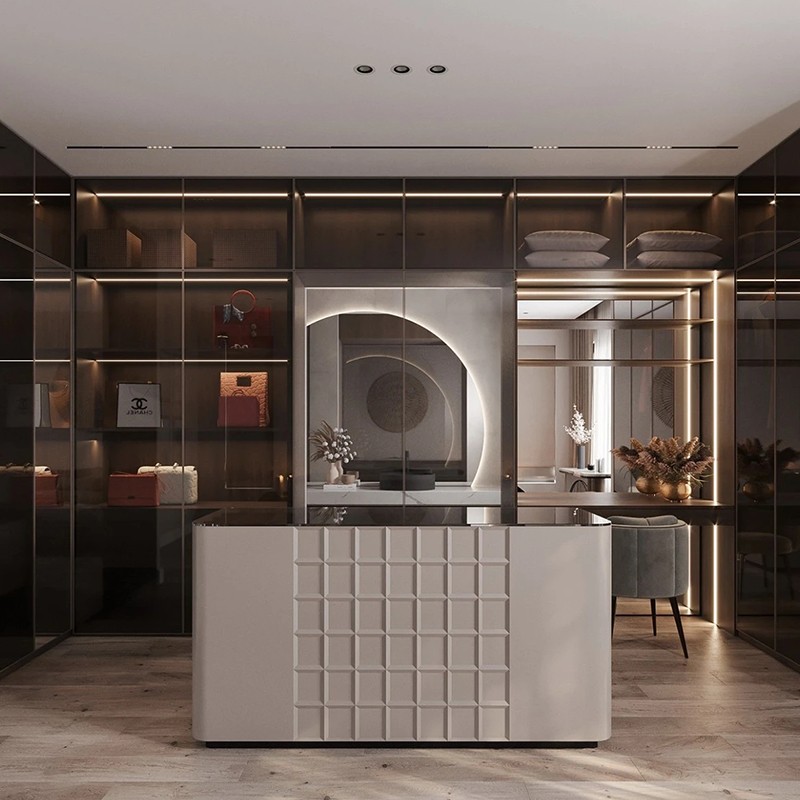
Which wardrobe wastes the most space?
Some wardrobe designs may seem beautiful, but they waste a lot of space due to unreasonable layout. Here are several types of wardrobes that are prone to wasting space:
2.1 Walk-in wardrobe
Walk-in wardrobes are considered to be a typical example of wasting space due to their large area. Walk-in wardrobes usually require a separate room or a large enough space to accommodate multifunctional clothing storage space. Although walk-in wardrobes can provide users with very ample storage space, they also take up a lot of home space.
For small apartments or families with limited space, walk-in wardrobes are often not suitable. If a walk-in wardrobe is designed in a limited space, it will make the entire room look crowded and cause a waste of space.
2.2 Closed wardrobes
Closed wardrobes are usually composed of multiple separate units or compartments, each of which usually stores different types of items independently. However, this design often leads to inefficient use of space. For example, if the depth of the wardrobe is too large, it may lead to excessive waste of space. Even if many clothes are stored in it, they may be difficult to access, resulting in empty storage space.
Moreover, if the doors of closed wardrobes are not properly designed (such as sliding doors), they may take up too much space, making the opening and closing of the wardrobe doors a "space consumption". This situation is particularly obvious in small rooms, which is likely to make the overall space cramped and uncomfortable.
2.3 High Cabinet Wardrobe
High cabinet wardrobe is a typical design with large floor space and uneven storage space. Although this type of wardrobe can provide a high storage capacity, its top space is usually difficult to fully utilize, and it can only store infrequently used items or seasonal clothing. Due to its large depth, the utilization rate of the bottom space may be relatively low, especially in smaller rooms, which may cause space waste.
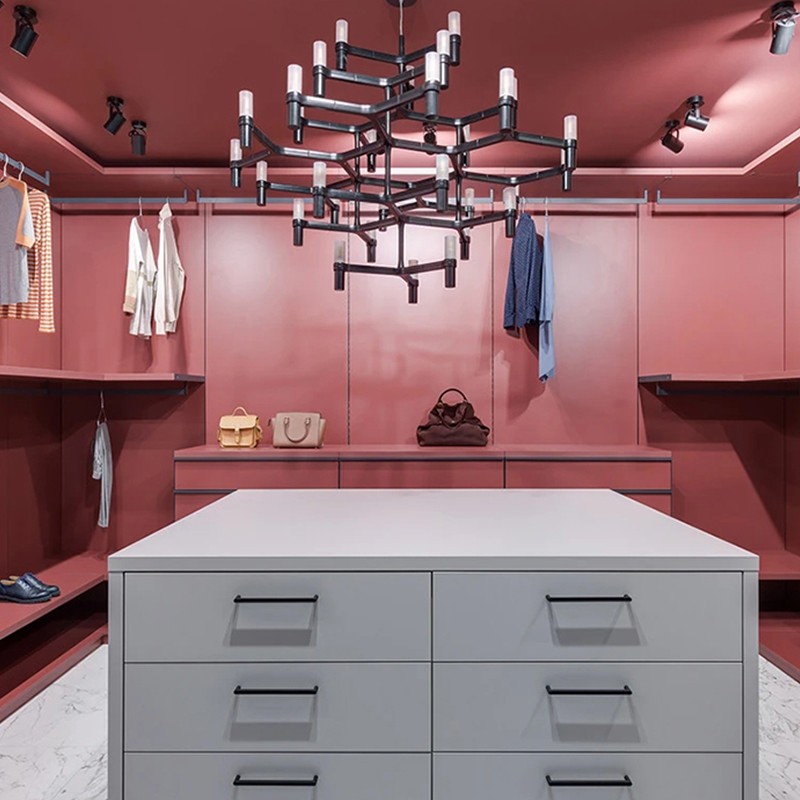
Which wardrobe saves the most space?
Compared with the wardrobe design that wastes space, the wardrobe design that saves space pays more attention to reasonable layout and efficient use of space. The following are several types of wardrobe designs that save space:
3.1 Built-in wardrobe
A built-in wardrobe is a wardrobe designed to be embedded in a wall or wall surface. The biggest advantage of built-in wardrobes is that they can make full use of wall space and hide storage units inside without taking up additional room area. This design is suitable for small apartments or families with limited space, and can avoid external wardrobes taking up too much space.
Built-in wardrobes can be customized according to the actual size of the room, which can not only greatly save space, but also effectively integrate into the overall design style of the room. The appearance of built-in wardrobes is usually simple and low-key, integrated with the wall, and it is almost invisible, giving the room a clean and tidy visual effect.
3.2 Sliding door wardrobes
Compared with traditional open door wardrobes, sliding door wardrobes can save more space. Sliding doors do not require additional space to open and close the wardrobe doors, which is especially important for some small rooms or corridors. In a narrow space, sliding door wardrobes can provide a more efficient use experience and avoid blocking the passage or compressing the available space due to opening the door.
In addition, the design of sliding door wardrobes is usually simple, and you can choose frameless or framed design to make the wardrobe look more modern and more integrated with various home styles.
3.3 Open wardrobe
Open wardrobe uses fewer doors and storage compartments. Its biggest feature is that it simplifies the wardrobe structure and reduces door panels and complex partitions. Open wardrobe is suitable for families with less storage needs, especially in relatively spacious environments. Its design not only allows clothes to be displayed, but also improves the utilization of space.
Open wardrobe design is very suitable for modern home style, especially for families with high requirements for storage but limited space. Open wardrobe can make the room appear more open and reduce the sense of closure and oppression in traditional wardrobes.
3.4 Custom wardrobe
The advantage of custom wardrobe is that it can be designed according to the specific situation of the space to maximize the use of every inch of space. Whether it is a corner, slope or other irregular shape of space, custom wardrobe can be perfectly integrated through design to achieve the best use of space. Custom wardrobes usually have a high space utilization rate and can flexibly adjust the layout of shelves, compartments and drawers according to actual storage needs.
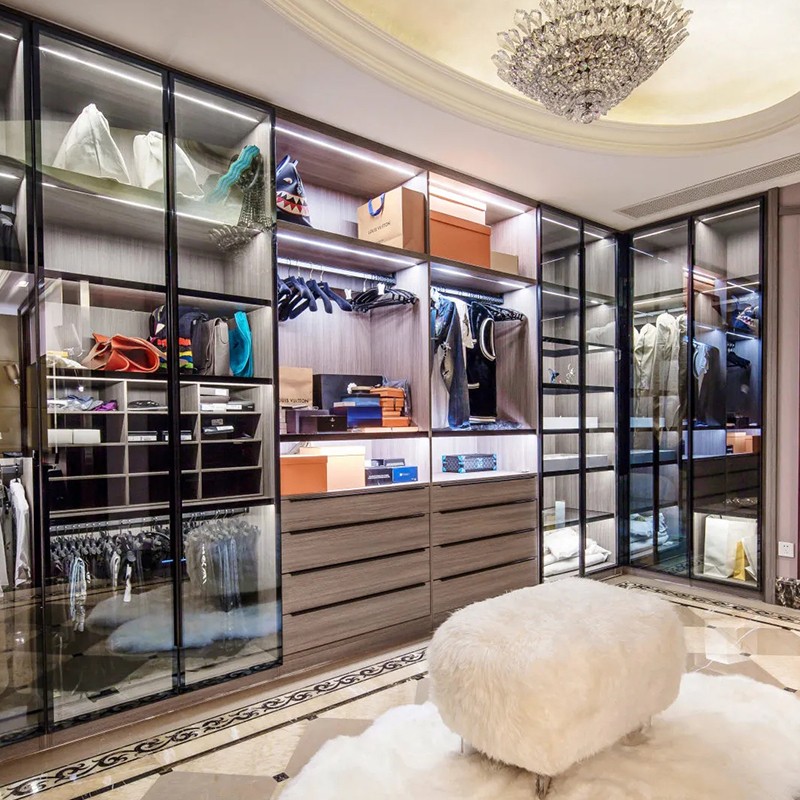
How to avoid wasting space?
When choosing a wardrobe, it is not difficult to avoid wasting space. Here are a few key tips:
● Tailor your wardrobe to your needs: Before buying a wardrobe, first understand the actual size of the room and calculate the available storage space. Choose the right wardrobe size based on the type, quantity and storage needs of clothing, and avoid choosing designs that are too large or too small.
● Choose multifunctional designs: Choose wardrobe designs that are multifunctional, such as drawers, pull-out baskets, shoe racks, hanging rods, etc., so that each storage area can be fully utilized and free space can be avoided.
● Flexible customization: Customized wardrobes are an ideal choice. They can be flexibly designed according to the needs of family members, the layout of the room and storage requirements, making full use of every inch of space.
● Reasonable choice of door type: Choosing sliding doors or folding doors can reduce the space waste caused by opening and closing doors, especially in small spaces.
Gagaluna has earned a reputation as one of China’s top manufacturers of customized cabinetry. With 18 years of experience, we specialize in designing and producing kitchen cabinets, wardrobes, bookshelves, bar cabinets, and high-end wall panels. Our products are made from high-quality materials such as stainless steel, glass, aluminum, and acrylic. We provide affordable prices and wholesale options, as well as customized solutions to fit your needs. Whether you’re looking for discounts or a custom quote, we ensure that you receive the best products at the most competitive prices.

